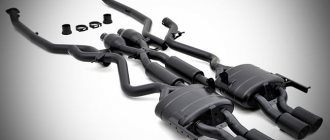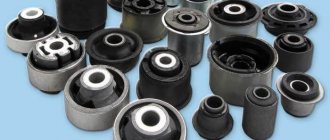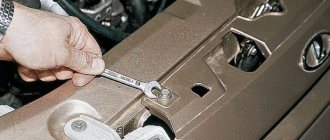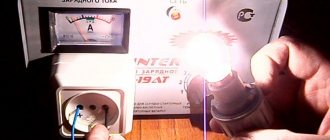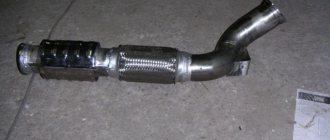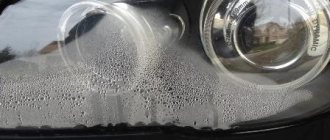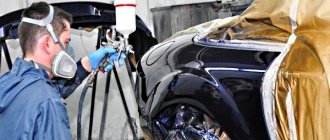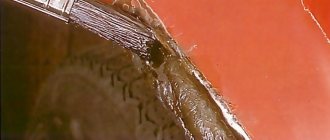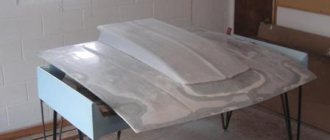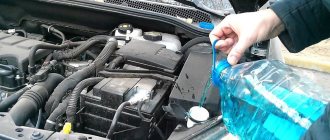The use of foam is among such human conjectures as the use of tools, the mastery of fire, the invention of the lever, wedge and wheel. Suffice it to remember that the bread we eat is frozen foam. In modern life, foaming is widely used, as are foam generators - devices for producing it in large quantities. In this article we will look at how to make a foam generator with your own hands for a fairly narrow but relevant area of application - contactless car washing and other household purposes. And in this by no means wide segment, as we will see, various designs with their own characteristics are used.
General information
Rydvan “armored cars”, painted on the ground in several layers, went to the same place where gasoline cost 7 kopecks. or 10 cents per liter and its consumption by passenger cars (!) is 30-50 liters per 100 km on the highway. Nowadays cars are painted with one very thin layer directly onto the metal. Modern paints are very durable, but rubbing the car with a brush or sponge is still not recommended. Nowadays, cars are washed first. in a contactless way. Let us remind you, just in case: apply the car shampoo solution to the contaminated surface, wait a while until the surfactant eats away the dirt, and rinse it off with water. The car wash community is split into two irreconcilable (just kidding) camps: one, the surfactant must be applied in the form of an emulsion without foaming; others believe that only active foam cleans well. Both give valid arguments in their favor, but since you are reading this text, then you are most likely a supporter of foam washing.
The “Penomoi” (another joke), in turn, are divided into two sects (and this is also a joke): “low-crats” and “high-crats”. Washing with low expansion foam (on the left in the figure below) requires a short wait time before rinsing (usually up to 5 minutes). Liquid flowing foam penetrates well into hard-to-reach places, but due to runoff, a lot of it is lost, and along with it, expensive car shampoo. Washing also requires a lot of water, and there may still be streaks that need to be wiped off with a soft sponge. To obtain high-expansion foam, and again water to wash it off, you need 1.5-3 or more times less water, the dense sticky “coat” (on the right) almost does not drain, but you have to wait up to half an hour for its full effect, and Dirt may remain in narrow crevices.
Car washing with low and high expansion foam
The question is also about price
Purchase a foam nozzle for the washing gun, like the one on the left in the same figure. above, no problem: they are inexpensive, and are often included with the pistol kit. But the nozzle only produces low-expansion foam. The prices for high-expansion foam generators are of a different order, plus you need a fairly efficient air compressor. Therefore, we will next consider how to make a foam generator for car washing, which allows you to obtain foam of various expansion rates with a conventional compressor for inflating tires or a homemade one. The price of simplification is reduced productivity and resp. lengthening the washing cycle. But for periodic washing of your car or for an on-call personal washer, this is not a problem.
Option #1
The main things you will need to make a foam generator are a metal container of the required volume, several small rotary taps, corner fittings and tees, fittings, an inch pipe 0.5 m long and several flexible pipes, which are sold at any plumbing supply store. You will also need a regular polyethylene washcloth. It will form foam.
The remaining components, as a rule, are available to almost every motorist:
- Bulgarian;
- roulette;
- spanners;
- pliers;
- compressor.
The sequence of work is quite simple. First of all, you need to connect the flexible tubes to the terminals of the metal tank. On each of the pipes you need to install regular plumbing taps, with the help of which the flow of foam and the air supply from the compressor will be regulated. One output of the storage tank is connected to an inch pipe, into which a polyethylene sponge must be hammered. At its opposite outlet, a filter is installed to catch small pieces of sponge. The second outlet of the reservoir is connected to the compressor hose.
As it passes through the washcloth placed in the one-inch tube, the cleaning mixture will foam. The compressor unit will create a pressure of several atmospheres to obtain the required pressure of the detergent composition.
Please note that the density of the foam produced depends on the length of the tube and the density of its packing with a washcloth.
A visual diagram of the assembly of such a foam generator is shown in the figure. If all the elements are connected in the correct order, such a device will be able to cope with its function and easily replace expensive factory-made equipment.
Terminology
There are hundreds of types of artificial foam, and many dozens of types of foam generators (without taking into account design features). Therefore, in order to avoid confusion in what follows, let’s define the terms:
- Foam is a finely dispersed system in a dispersion medium. Simply - a liquid, elastic, elastic or solid bubbly substance in which the total volume of the cavities of the bubbles is at least several times greater than the total volume of the partitions between the bubbles.
- Foaming is the transformation of the initial dispersible medium into foam.
- A foaming agent is an initial dispersible medium, a substance or a mixture of substances that foams under certain conditions.
- Filler is a gas that fills foam bubbles. There is a vacuum in the bubbles of unfilled foam.
- A foam generator or foam generator is a technical device, the inputs of which are supplied with a foaming agent and filler, and foam comes out of the output. An unfilled foam generator is a vacuum chamber with continuous pumping into which active filler is supplied.
- Bubbler (foaming agent) is the part of the foam generator in which foaming occurs.
- An active bubbler arouses the foam in one way or another, acting mechanically, pneumatically (bubble bubbler), or through electrical, chemical or electrochemical processes.
- A passive bubbler is a solid, chemically resistant dispersed system through which the foaming agent sol in the filler is forcibly pumped. Foaming occurs due to microturbulence in the pores of a passive bubbler.
- Active foaming agent - does not require the supply of filler, because It foams itself under certain conditions (heating, pressure relief, adding a foaming reagent, etc.).
- Foam expansion ratio is the ratio, per unit volume, of the total volume of the filler to that of the foaming agent. For example, if it took 1 ml of foaming agent to create 1 liter of air foam, then its multiplicity is 999.
Note: modern special-purpose foam generators can produce foam with an expansion ratio higher than 1000. For contactless car washing, foam with an expansion ratio from 15-20 to 50-70 is used.
About shampoos
Where to buy shampoos? In any automotive chemical store. But it is very important to understand how to use special chemistry.
Cities such as Moscow, Yekaterinburg, St. Petersburg and many others offer a huge range of special active foam. To be more precise, the concentrate is sold.
Try to choose high-quality mixtures that are popular. Never use concentrates with a pH value of more than 12. More aggressive mixtures can corrode paintwork, chrome parts, rubber seals, etc.
It is also impossible for the shampoo to contain a component called sodium hydroxide or simply caustic soda. It is abused by manufacturers because it effectively destroys dirt and is cheap. But at the same time it causes enormous damage to the paintwork.
The idea of touchless car washing is based on minimal impact on the paintwork when regularly cleaning body panels. In practice, it is the foam generator for a car wash that allows you to perform such car care.
Operating principle
So, we will design an air-liquid foam generator with a passive bubbler. This type of this class of devices is technically simple and accessible for self-production, and its performance and foam expansion indicators are sufficient for an individual car wash. Air-liquid means that the foaming agent is liquid (a solution of car shampoo in water), and the foam filler is atmospheric air.
The principle of operation of a foam generator of this type is illustrated in the figure:
Operating principle of a foam generator for car washing
Depending on the method of supplying the foaming agent and filler, this device can be structurally designed:
- Injection (supercharged) - the foaming agent and filler are supplied forcibly under pressure. The possibilities for adjusting the expansion rate and foam consumption are the widest. “Range” (see below) is the greatest. Air compressor – low or medium performance for a pressure of 4-5 ati (4-5 bar (approx.) or 55-70 psi). Shampoo consumption for washing a passenger car is 30-50 ml; water for foaming agent – 5-6 liters.
- Direct ejection (supercharged) - air is also supplied forcibly and sucks the foaming agent from a supply container with atmospheric drainage, as in a cologne atomizer with a pear. Structurally simpler than before. type (no need for a pressure vessel), but the ability to set foam parameters is somewhat narrower. Compressor for pressure from 2-2.5 ati (bar, or 29-36 psi); water and shampoo consumption approx. 1.5-2 times more than before. case. With a low-performance compressor (for inflating tires), it is possible to obtain only low-expansion foam. Most foam nozzles for washing guns are built according to this scheme.
- Reverse ejection - a jet of foam concentrate from the nozzle draws in atmospheric air. Its flow rate is determined by the pressure drop at the nozzle exit, which cannot be more than 1 atm (0.987 bar or 14.5 psi), so it is impossible to obtain high-expansion foam. The additional parameters relevant for a car wash (see below) are unsatisfactory, but using a model of such a device using a washing gun with a mud cutter and cutting a plastic bottle with a “waist” (below in the figure), you can clearly understand the principle of operation and learn how to adjust the foam.
Extra options
The performance of a foam car wash is significantly influenced by additional parameters of the foam generator:
- range of foam jet ejection (range) - the greater the distance you can “shoot” a given area, the less time it takes to wash and the better its quality will be, because the foam sprayed at the beginning has less risk of “overstaying”;
- homogeneity of the jet - washes the car preeminently. foam from the dense core of the jet, and the flakes that form the halo flow down more uselessly;
- transverse compression of the jet - washing foam with a compressed “shovel” results in much less loss of surfactants than with a “broom” that is round in cross section.
Injection generators “shoot” the farthest, 3 m and further. The uniformity and compression of the jet is largely determined by the spray nozzle, see below.
Another generator
Some foam nozzles for washing guns are produced with double bubbling, active pneumatic and passive. Air is pumped into the supply tank through a sprayer in the form of a stream of bubbles through a foaming agent, above the surface of which a cap of low-expansion foam is formed. When you press the shutter, part of it enters a chamber with a passive bubbler, which increases the foam expansion rate. Due to this, the range of jet emission sharply decreases, but a household pump sprayer can be very easily adapted to a generator of this type for washing small surfaces (see below), and the possibility of using it for its intended purpose is not lost.
Which one should I do?
Types of homemade foam generators
The choice of the type of foam generator for self-construction is made based on the existing production and economic needs, the container for consumables and the allowable costs of creating the installation (see also Fig.):
- from a household pump sprayer - only a mini-generator with double bubbling. But with its help you can wash the most dirty places of the car: wheels, wheel arches and body sills (see figure below), motorcycle (sorry - bike), scooter/moped, bicycle, rubber boots after going out into nature or working in the garden;
Washing car wheels and wheel rims with foam - from a pump portable garden sprayer - the same foam generator without a compressor, but suitable for washing a compact city car. With a compressor - any of the types described above. The best base unit is the Russian “Beetle”, its tank can hold 6 bar without any problems;
- from a car fire extinguisher - a supercharged foam generator for washing a personal car or minibus/van of the Gazelle type. "Ford Transit", "Mercedes Transporter", etc. A compressor for inflating tires or from a refrigeration unit will do;
- from a stationary fire extinguisher - a foam generator for professional washing, incl. heavy vehicles. Compressor - with a capacity of 120-150 l/min (for example, based on an onboard ZIL-130);
- from a canister, bucket with a lid, etc. – ejection with supercharging. The generator parameters are determined by the type of compressor available.
The device of "real"
For high-quality car washing, you still need an injection or “direct” ejection foam generator. Structurally, they are largely similar, so let’s look at both at once.
The structure of a supercharged washing foam generator is shown in the figure:
The device of a foam generator with pressurized supply tank
Foaming begins already in the supply pipe, since due to the so-called. throttling effect, the pressure behind the mesh filter drops and air microbubbles are released from the mixture. This is not foam yet, but there are many embryos of it. Amateur designers usually do not install a foam concentrate nozzle, passing the mixture ready to foam directly through the bubbler. But in vain: a sharp drop in pressure behind the jet does not produce an aerosol, but a “foam sol” of tiny droplets of high-expansion foam. In the bubbler they “swell” with air, almost without losing their multiplicity, and thick, sticky, almost non-draining “Nivea for cars” goes into the hose.
Setting up a supercharged foam generator does not require qualifications:
- the compressor gearbox is set to a pressure from 4 bar (min.) to 6 bar (max.) depending on the required foam flow;
- the boost and adjustment valves are fully open;
- turn on the air supply and set the foam ratio using the valve settings (visually, based on its density and fluidity);
- the boost valve sets the foam flow rate;
- If necessary (rarely), I adjust the quality of the foam using the adjustment valve.
An ejection-type foam generator (in the next figure) is also connected to the compressor through a pressure reducer; A check valve in this installation is not necessary; the standard one in the compressor will suffice. The design of an ejection foam generator is similar to an injection one, only the nozzle is moved to a different location.
The device of a foam generator without pressurization of the supply tank
But setting it up is more complicated:
- shut-off valves are closed;
- The air control valve is opened approx. half;
- the foam concentrate control valve is closed;
- turn on the air, open the shut-off valves;
- by smoothly opening the foam concentrate control valve, achieve the appearance of foam from the nozzle nozzle (see below);
- Operating the control valves alternately or simultaneously to achieve the desired consistency and foam consumption. The adjustments are interdependent!
Note : if you need to wash the same car, operated under the same conditions, with the same shampoo, then after adjusting the foam, it is better to carefully remove the handles of the control valves so as not to disturb the adjustment.
Design Features
The supply tank of the injection foam generator must withstand a pressure of at least 8-9 bar. The purpose of the check valve is rather technological: when the foaming agent has been used up for approx. by 2/3, the compressor can be turned off, and the rest of the mixture will be produced under residual pressure, because its fluctuations within 30-35% do not significantly affect the foam parameters. The diameter of the hole in the jet washer is 1-3 mm and is selected for a specific shampoo; You can get a set of washers with holes of different diameters. Length L of the mixing chamber of the injection generator is 120-180 mm; ejection 220-350 mm. Channel diameter resp. 8-20 and 9-12 mm.
Scheme if you make the nozzles yourself
There are different types of nozzles. What tools will you need for this:
- Roulette;
- Bulgarian;
- Knife;
- Spanners;
- Pliers.
Prepare an inch pipe of at least one and a half meters and a washcloth. How to assemble - cut the pipe to at least 0.5 meters, the larger the pipe, the better the quality of the foam. But don’t forget, a large pipe also requires a powerful compressor. Next, you need to hammer the pipe with a washcloth and cut a thread at the end, screw a tee onto one end, and filler on the other. Install a large filter, put a plug on one of the tee terminals, and connect a water source with shampoo and a compressor to the remaining ones.
You can also adapt a regular garden sprayer and choose the right compressor. Remove the fitting and valve from it, remove the pump and install the plug. We will get 2 holes in the sprayer, screw in the clamps and secure them, install the gaskets. Screw a check valve with a fitting into one of the pipes and install a tank on the other.
When buying a foam sink, be sure to pay attention to the presence of a foam nozzle; if it is not there, you will have to do it yourself, maybe this will be a joy for someone, and it will also save significant money. And all the materials can be found at home in the garage, so making a foam generator with your own hands is simple and profitable.
Parts and components
The critical components of the foam generators described here and below are:
- passive bubbler;
- mesh filter;
- check valve;
- spray nozzle.
Bubbler
Passive bubblers for washing foam generators are sold under the name foam tablets. Hobbyists, as a rule, make foam tablets themselves from a steel kitchen sponge (scraper, “brush”). But - no need.
A high-quality branded foam tablet is a putanka (emphasis on the first syllable) made of round stainless wire, see figure:
Foam tablet for foam generator
Firstly, steel sponge is not designed for long-term work under pressure in an active environment. Secondly, it (the steel sponge) has a lot of thin sharp edges. Active foam “pinches off” microparticles of solid metal from them. Not a bad abrasive, right? And - on sparkling paint. The car begins to lose its appearance after 3-10 washes, depending on the quality of its painting.
Net
Strainer:
- begins foaming in the supercharged injection generator;
- serves as an active bubbler in a double bubbling foam generator (see below);
- can become the basis of a very good homemade passive bubbler, in no way inferior to the best branded one.
For the latter case, you will have to buy something, but quite inexpensively, in some hardware store ("Everything for the home", plumbing, etc.). There, however, they do not always know what it is. Often it’s just They put a price tag without the name of the product. So let’s take a closer look.
Unscrew the cap from the faucet spout of the kitchen sink or washbasin (arrow on item 1 in the figure below). This is done simply with your hand, if you hold the “gander” with the other. Examine what is unscrewed. Do you see the mesh (item 2)? Push it with your finger and the mesh filter will come out. Its lid can be removed if you pry it off with a toothpick, etc. in any of the side holes, arrow on pos. 3. The meshes are squeezed out with your finger in the same way (pos. 4).
Household tap strainer
Note : you might be surprised how much dirt there is! In such a case, the nets are cleaned with an old toothbrush under a weak stream of water. Signs of clogging - the stream from the tap jerks, breaks into drops early, and splashes.
Now let’s remember what to look for, or take it with us as a sample - to show it to a young, tolerant, politically correct, confident saleswoman. At home, we disassemble the “new, good” filter and cut off the stop from the cover (arrow on item 4). For what? 3-4 meshes are not enough for a foam generator. The missing ones can, firstly, be cut out from an old strainer from a Chinese teapot; stuff them as much as will fit. This thing is suitable for a filter, and instead of a foam tablet (installation diameters 20/18 mm) for a productive foam generator. The foam is a sight to behold - high-quality, thick, you could make snowballs out of it.
Secondly, you can supplement the filter with synthetic felt cut from a soft kitchen sponge (see figure). It is necessary to cut with a lack of thickness so as not to catch the adhesive layer. A filter with this addition is suitable for an active pneumatic bubbler and a passive one in a manual foam generator.
Valve and nozzle
Do-it-yourselfers install purchased reed valves in their foam generators or make them themselves “in the image and likeness” of standard ones. Which requires turned parts and some plumbing experience. And we will make a ball valve at home “on the knee”, that is, on the work table. Its throughput is lower, and its response delay is greater than that of a leaf valve, but we don’t need to turn a turbo drill, and the ball valve is very durable and reliable.
You will have to buy a bronze water tee for 1/4″ - 3/4″ (crosspiece, if the generator has a pressure gauge) with an external thread (type NNN), select a ball from a bearing of a suitable diameter and a piece of tube for it; drawings and proportions of a check valve for a homemade foam generator are given in the figure:
Ball valve drawing for foam generator
The assembly is done as follows:
- in the tee/crosspiece, holes for stops are drilled in one pass;
- one of the ends of the piece of tube for the valve seat is countersunk with a conventional twist drill;
- the saddle is placed in the tee/crosspiece and placed on the table with the saddle down;
- insert the ball and, with light blows of a hammer, drive it to the saddle through a hard wooden stick;
- the seat is secured from the outside to prevent it from falling out with silicone glue; the connecting fitting will not allow it to be squeezed out under pressure;
- place a stop, fix it with silicone or caulk it.
Note : a homemade ball valve may leak a little at first, but after 3-4 air starts/misfires, the ball will “beat” its seat until it is completely tight.
Drawings of the spray nozzle for the washing foam generator are given on the following. rice.:
Drawing of a spray nozzle for a foam generator
If the foam is simply supplied through a hose without a gun (which, of course, is inconvenient), instead of a threaded socket, a herringbone fitting is machined for the hose. It is not advisable to reduce the length of the nozzle, because it also serves as a “mint” stabilizer in the foam hose. Making a nozzle is quite complicated:
- through channel D6 is drilled;
- the threaded socket is turned out, the workpiece is turned to the shape from the outside;
- From the right (according to the drawing) end of the workpiece, 2 D6 holes are drilled at an angle, converging in a V-shape at 27 mm from the end. This is a complex and responsible operation;
- From the left end according to the drawing, channel D9 is drilled to a depth of 270. It is advisable to go through it with a reamer after drilling, because roughness in the channel strongly “hits” the foam expansion rate;
- Excess material is removed from the right end with a thin narrow cutter. This is the most delicate operation;
- The fit of the nozzle on the gun is checked and adjusted by grinding the left end, see fig.
Tank options
It is better to make an injection foam generator based on a powder fire extinguisher, and there is a pitfall here - its standard bubbler. The first powder fire extinguishers were plastic containers with a lid filled with self-foaming extinguishing powder when heated. Simple, cheap, but if it got on a hot metal surface, the powder could explode. In general, simple dry powder fire extinguishers have saved many more lives and property than they have caused harm; quite a few of them are still waiting in the wings to this day. But, of course, a possible explosion instead of extinguishing a fire is no good. Therefore, modern powder fire extinguishers (see figure on the right) are filled with microencapsulated fire extinguishing composition and pumped with an inert gas, which squeezes the powder through a steel sponge. The shells of the microgranules in it are destroyed, and the ready-made extinguishing mixture comes out. It’s complicated, a little expensive, the fire extinguisher needs to be checked periodically, like a carbon dioxide one, but an explosion is excluded.
So, the foam tablet enters the internal nest of the microgranules destructor. First, they naturally use a used-up fire extinguisher for the foam generator, and don’t buy the tablet. Why, it seems, if something that looks suitable already exists? But the fire extinguisher destructor is disposable; it will create dust with a steel abrasive even stronger than a kitchen sponge. Secondly, there is no aerosol chamber in front of the bubbler in the fire extinguisher, and without it high-expansion foam will not be produced, this is the first. However, this is “not fatal”; it is possible to modify a foam generator from a fire extinguisher to obtain high-expansion foam, see video:
Video: modifying a foam generator from a fire extinguisher
Note : for another version of a homemade foam generator from a fire extinguisher, see next. video clip:
Video: making a foam generator from a fire extinguisher
Options for the Beetle
A foam generator from a Zhuk type sprayer can be made with supercharging from a built-in pump or compressor. To wash a city car, 3-7 liters of foam concentrate are required. Garden “Beetles” are available in capacities from 5 to 10 liters, above in the figure:
Garden sprayers of the “Beetle” type and a foam generator from such a sprayer
To ensure that the foam “keeps its condition” and does not stagnate while the tank is being pumped up, you need to fill it with foaming agent no more than halfway (preferably 1/3). And in order to wash a large car with a small “Beetle”, you need to install a pipe in its tank to connect the air hose from the compressor (shown by the arrow below in the figure). If the compressor is homemade without a graduated gearbox and pressure gauge, then the pipe is needed with an internal inch thread. A tee with a check valve is screwed into it (see above). A pressure gauge is screwed onto the free arm of the tee; threaded joints are sealed with FUM tape. In order for the sprayer to be used for its intended purpose after modification, you will also need to buy a plug for the shoulder of the tee with a valve.
Creating a car wash with your own hands
Thanks to a high-pressure car wash, you can easily clean your car from any dirt. The combination of strong water pressure and a special nozzle, which allows you to cover a larger volume, is liked by motorists. The versatility of such a unit also makes it attractive.
In many stores you can buy an industrial car wash, but the cost will be quite high. To save money, as well as for the pleasure of doing something yourself, many motorists prefer to do their own car wash. There are a large number of training videos in which you can find out all the information necessary to create it.
First you need to select the necessary parts. These include:
- Pump.
- Electric motor.
- Clutch.
- Water reservoir.
- Pump performance regulator.
The pump must be selected very carefully. It will be the most expensive element in the entire structure, but it will last a long time. All important parts of the pump must be metal. In addition, it must be characterized by high performance and resistance to pressure of 150 atmospheres.
A single-phase electric motor with a power of 220 V can be used for a car wash. The connection will be secure and inexpensive. The higher the engine speed, the greater the level of performance. The electric motor will be connected to the pump by a coupling. It would be optimal to use a soft coupling, which can become a fuse if the pump is faulty.
The water reservoir must be large in size so that the pump can operate for a long time without interruption. Water supply tanks are often used. You can attach a mesh at the junction with the hose to prevent any debris from damaging the pump. The material of the container must be chosen carefully, as it must be durable. Thick metal or plastic will do.
To make a high-pressure car wash with your own hands, you must also purchase a regulator for the pump. It will help return some of the water to the reservoir if there is a risk of overloading the pump. All elements are fixed on a special frame. They also add hoses that can withstand high pressure, a brass pump and a spray gun.
The process of washing a car can be made more effective if you attach some kind of brush or other attachment to the water hose.
They will complement the list of car wash functions. If desired, you can turn the sink into a steam cleaner. This will also require a special nozzle for the hose, as well as a heater.
You cannot use the same sink for a long time, as it will quickly become unusable. The purpose for which the sink will be used affects its final dimensions. In appearance, the sink can be:
- Compact.
- Large stationary.
The second option is more difficult to use at home and requires a lot of space in the garage.
Knowing how to make a car wash with your own hands, every motorist will think about how to use it correctly.
There are several basic rules of use:
- Regular inspection of connections and their tightening will help prevent mechanical damage that can occur from strong pressure.
- Inspect the filters before use - cleaning them regularly will ensure an even supply of water.
- Grounding the electrical circuit - not only the electric motor must be grounded, but also the plug itself. Then the device will be safe.
- Washing should be carried out over the entire surface so as not to damage the paint that covers the car. If a drawing or sticker is applied to the car, then you should not direct a stream of water at this element, as it can lead to cracks in the coating or remove the sticker.
- It is advisable to use a battery in case of a poor-quality source of electricity. This will protect the unit from short circuit
- Avoid temperature changes - a sudden change in air temperature can lead to damage to the instrument.
When using, you must remember that washing the car is not allowed everywhere. Washing your car near ponds and lakes will result in a fine. This rule, however, does not apply to keeping headlights and glass clean.
You can use a high-pressure car wash not only outside the car, but also inside. This will allow you to clean the interior very quickly and efficiently. A wide selection of attachments and rollers will help you do even delicate cleaning in your car.
If you know how to make a foam generator and how to make a car wash with your own hands, you can save a lot of money. Experienced motorists have all the necessary materials and tools in their garages, so they will only have to spend money on a special car shampoo.
Sources
- https://AvtoMotoProf.ru/svoimi-rukami/penogenerator-dlya-moyki-svoimi-rukami/
- https://pricep-vlg.ru/auto-gadget/penogenerator/
- https://carnovato.ru/penogenerator-avtomojki-svoimi-rukami/
- https://AutoVogdenie.ru/kak-sdelat-penogenerator-dlya-mojki-avto.html
- https://www.asusfone.ru/svoimi-rukami/kak-sdelat-samodelnuju-nasadku-penogenerator-dlja-beskontaktnoj-mojki
- https://zen.yandex.ru/media/id/5ad336113dceb74b285db6f8/5ae8492a2f578c0c72468d0e
[collapse]
Manual mini foam generator from a sprayer
“Beetles” are also produced as hand-held household ones. However, for a non-compressor mini-foam generator with double bubbling, any household sprayer of a similar design is suitable: an excess pressure of 1-2 bar, to which it can be pumped with a standard pump, is sufficient in this case.
To make a portable foam generator from a household sprayer, you first need to remove and disassemble the outlet valve of its air pump, on the left in the figure:
Making a foam generator from a household sprayer
There is almost always enough space in the valve nozzle to place a synthetic felt gasket at the air outlet (see above) and thus obtain a first-stage pneumatic bubbler; You may need to tighten the valve disc return spring a little. The primary bubbler is checked by immersing it in a jar of water: when you press the piston rod, air should come out into the water in a thick stream of small bubbles. You may need to add felt. Next, the standard sprayer is unscrewed, and the body of a medical syringe with a foam tablet (preferably branded wire or homemade mesh, see above) and 3-4 layers of synthetic felt from a kitchen sponge are pulled onto its nozzle. The felt pad is placed first along the foam path, on the right in Fig. That's all, you can refill and wash. Only if the sprayer is used for its intended purpose, the primary pneumatic bubbler will need to be removed before filling with fertilizers or pesticides, otherwise the active ingredients of the drugs may oxidize before they fly out.
Finally, note : for 2 options for turning a sprayer into a washing foam generator, see the video:
